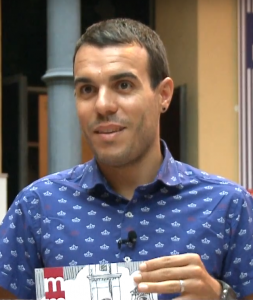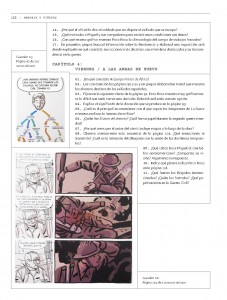Fighting the Black Hole: Teaching Twentieth-Century History through Comics in Spain
Spanish high schools often cover the Civil War and Francoism only sporadically and superficially. A new book with lesson plans based on graphic novels hopes to improve the situation.
Was Francisco Franco a dictator? The question seems silly. Yet in the days following Franco’s exhumation from the Valley of the Fallen this fall, a poll conducted by the Spanish television network LaSexta found that more than a third of those voting for the conservative Partido Popular did not think he was. Close to sixty percent of those voting for the far-right party Vox agreed with them.
It may be a given that ideology colors our view of the past. But there is a practical explanation for these surprising poll results as well: a deficient history education. At Spanish secondary schools, the Civil War and the Franco period are often only covered superficially, if at all. In the last large nation-wide poll conducted on this topic, which dates from 2010, close to 70 percent of respondents said they had received no or very little information about the Civil War in high school. According to Fernando Hernández Sánchez, who trains future history teachers at the Autonomous University of Madrid, the situation has only worsened since then. “A massive black hole”: that is how he describes the state of Spanish history education when it comes to the twentieth century.
“The history curriculum for 15- and 16-year-olds is heavily overloaded,” says David Fernández de Arriba, a 34-year-old high-school history teacher from Catalonia. “We only teach three hours of history per week. And we start in the seventeenth century. This means that the Spanish Civil War doesn’t come up until the very end of the year—if we don’t run out of time, that is. Getting to cover the Franco period is even less likely. Just the other day I was talking to my colleagues at the school where I teach. Many said they, as students, had never gotten around to the Civil War at all. Of course, for some teachers and schools it’s a convenient excuse to avoid a still controversial topic.” The period returns to the curriculum in the last years of high school, but only for the subsection of students who aspire to go to college.
“There clearly exists a political will to keep things the way they are,” Fernández adds. “Otherwise, the situation would have been addressed through a curricular reform a long time ago.” In addition to the unfortunate timing, the textbooks themselves leave much to be desired, as well, he says. “They tend to treat the war and the dictatorship in ways that are extremely superficial. Often they also adopt the notion that ‘both sides’ carry blame, since ‘atrocities were committed by both’.” As scholars like Paloma Aguilar and Pablo Sánchez León have argued, this view of the Civil War is in effect a legacy of late Francoism.
Although the panorama is disheartening, interesting local initiatives are under way. Along with three co-authors, Fernández has coordinated the publication of Memoria y Viñetas (Memory and Comic Strips), a book that features four critical essays and gathers more than a dozen lesson plans about the Civil War and Francoism based on graphic novels. A Catalan edition came out last year, sponsored by a Catalan government agency. The first print run of the Spanish edition, of a modest 700 copies, was fully distributed within a month.
“I love comics, and have read them all my life,” Fernández says. “But our main goal is to remedy the lack of knowledge about the past.” This is an urgent task: “The far right has grown tremendously in recent years,” Fernández says. “And they openly defend the Franco period. In fact, the Spanish right has never been willing to condemn Francoism. With the rise of right-wing revisionism, it’s more necessary than ever to make sure the new generations study our past.”
The book builds on the boom in graphic novels set during the Civil War and Franco period (see Carmen Moreno Nuño’s article in these pages in December of last year), with lesson plans inspired by the work of Antonio Altarriba, Ana Penyas, Jordi Peidro, or Paco Roca—whose novel Surcos del azar, written with ALBA’s Robert Coale as advisor, was featured in The Volunteer in December 2014.
“The language of the graphic novel is highly accessible to a teenage audience,” Fernández says. “Moreover, narrating history through individual stories that allow students to identify with the characters allows for more meaningful forms of learning. And the graphic novel is versatile enough as a genre to give teachers plenty of freedom to adapt the material to their students or teaching style.”
Memoria y Viñetas. La memoria histórica en el aula a través del comic, written by Gerardo Vilches, Pepe Gálvez, Elena Masarah Revuelta, and David Fernández de Arriba, is published by Desfiladero Ediciones and can be easily ordered online. Fernández also runs the blog historiaycomic.com.














